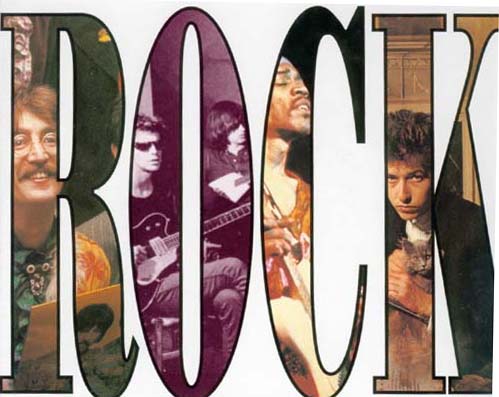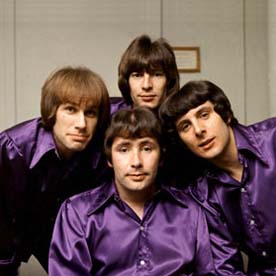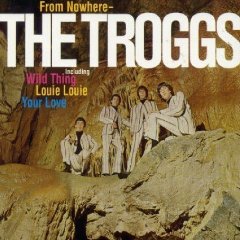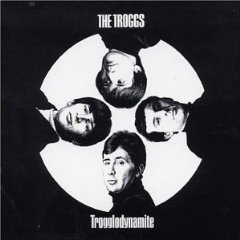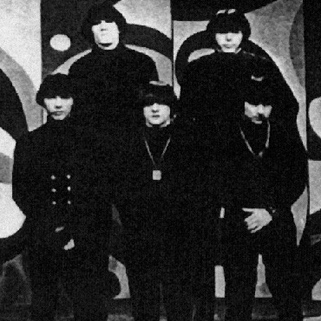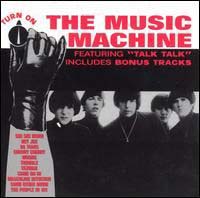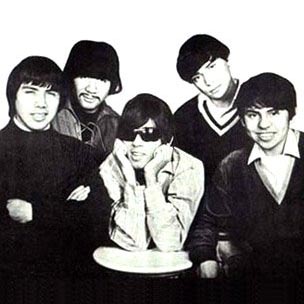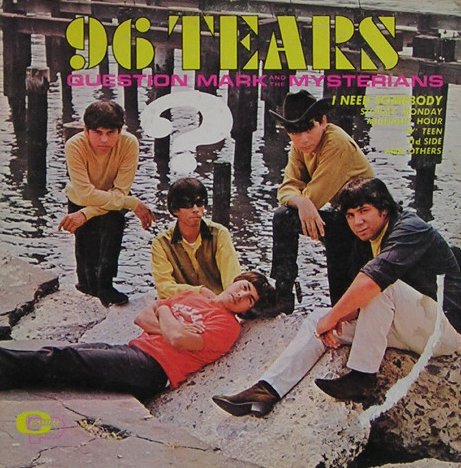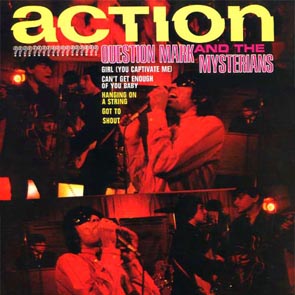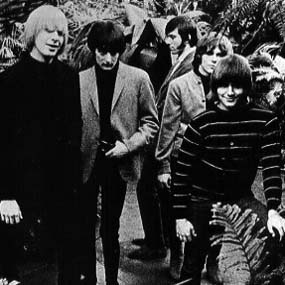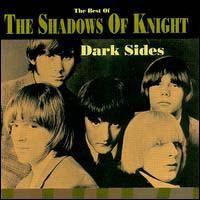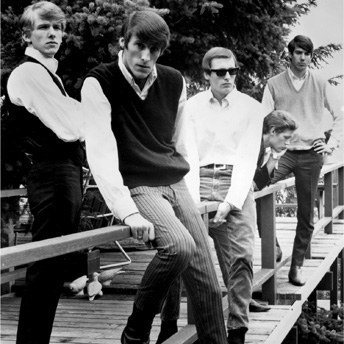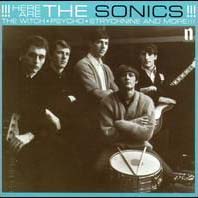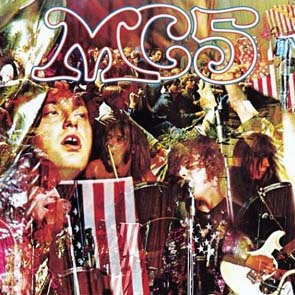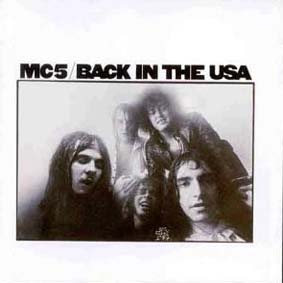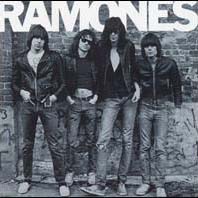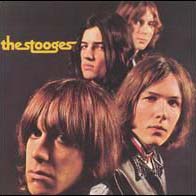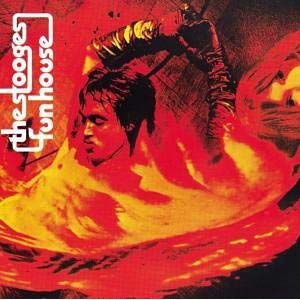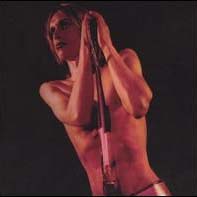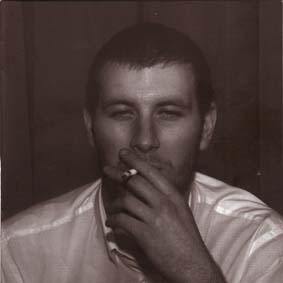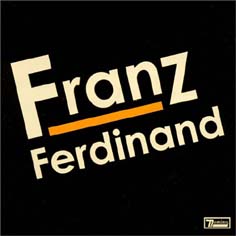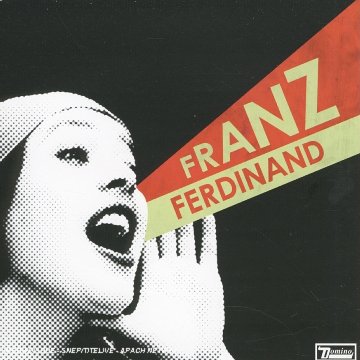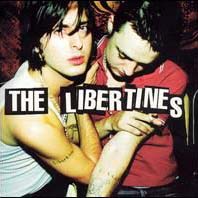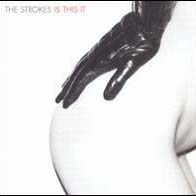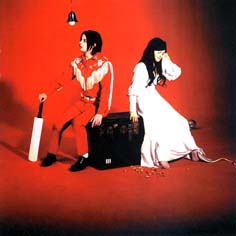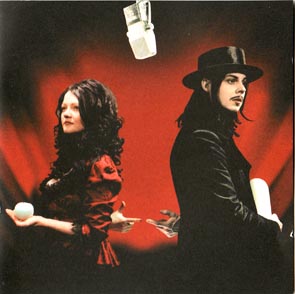|
|
|
STORY
au néo-paganisme : Garage Rock |
The term "garage rock" comes from the
perception that many such performers were young and amateurish, and often
rehearsed in a family garage. Some bands were made up of middle-class teenagers
from the suburbs, but some were from rural or urban areas, while others were
composed of professional musicians in their twenties.
The performances were often amateurish or naïve, with
typical themes revolving around the traumas of high school life and songs about
"lying girls" being particularly common.The lyrics and delivery were
notably more aggressive than was common at the time, often with growled or
shouted vocals that dissolved into incoherent screaming. Instrumentation was
often characterised by the use of guitars distorted through a fuzzbox. Nevertheless,
garage rock acts were diverse in both musical ability and in style, ranging
from crude one-chord music (like the Seeds and the Keggs) to
near-studio musician quality (including the Knickerbockers, the
Remains, and the Fifth Estate). There were also regional variations
in many parts of the country with flourishing scenes particularly in California
and Texas. The Pacific Northwest states of Washington and Oregon had perhaps
the most defined regional sound.
The style had been evolving from regional scenes as
early as 1958. Tall Cool One on 1959 by The
Wailers and Louie Louie by The Kingsmen
on 1963 are mainstream examples of the genre in its formative stages. By 1963,
garage band singles were creeping into the national charts in greater numbers,
including Paul Revere and the Raiders (Boise), the Trashmen
(Minneapolis) and the Rivieras (South Bend, Indiana). Other influential
garage bands, such as the Sonics (Tacoma, Washington), never reached the
Billboard Hot 100 singles chart. In this early period many bands were heavily
influenced by surf rock and there was a cross-pollination between garage rock
and frat rock, though the latter is sometimes viewed as merely a sub-genre of
garage rock.
The "British Invasion" of 1964-6 greatly
influenced garage bands, providing them with a national audience and leading
many (often surf or hot rod groups) to adopt a British Invasion lilt. The
Invasion also inspired new, and often very raw, bands to form. Garage rock
bands were generally influenced by those British "beat groups" with a
harder, blues-based attack, such as The Kinks, The Who, The
Animals, The Yardbirds, The Small Faces, The Pretty Things,
Them, and The Rolling Stones. A handful of British garage bands
were formed, the most successful being the Troggs. Another influence was
the folk-rock of the Byrds and Bob Dylan, especially on bands
such as the Leaves.
|
|
|
|
|
|
||
|
1966 From Nowhere |
1967 Trogglodynamite |
|
|
|
|
Peak of popularity
Thousands of garage bands were extant in the USA and
Canada during the era and hundreds produced regional hits. Examples include: Fortune Teller by Des Moines's The Image
(1967), I Just Don't Care by New York City's
The D-Men (1965), The Witch by The Sonics (1965), Where You Gonna Go by Unrelated Segments
(1967). Several dozen garage bands produced national hit records, including
"Surfin' Bird" by The Trashmen (1963), "Louie Louie"
by The Kingsmen (1963-64), "Psychotic Reaction" by The
Count Five (1966), "Pushin' Too Hard" by The Seeds (1966),
Gloria by the Shadows of Knight (1966), 96 Tears by Question Mark and the Mysterians
(1966), Talk Talk by The Music Machine (1966),
Dirty Water by The Standells (1966),
Double Shot (of My Baby's Love) by The Swingin'
Medallions (1966), Respect by The
Rationals (1966), Ding-Dong! The Witch Is Dead
by The Fifth Estate (1967), "Let It Out (Let It All Hang Out)"
by The Hombres (1967) and "Little Bit O'Soul" by The Music
Explosion (1967).
|
|
|
|
|
|||
|
1967 Turn On |
|
1966 – 96 Tears |
1967 - Action |
|
||
|
|
|
|
|
|
||
|
Shadows
of Knight |
1966-69 Dark Sides |
|
The Sonics
|
1965 Here Are The Sonics!!! |
|
|
Decline
Despite scores of bands being signed to major or large
regional labels, most were commercial failures. For instance, Going All the Way by The Squires was issued on
a national label under (Atco) and is now regarded as a genre classic, but was not
a hit anywhere. It is generally agreed that garage rock peaked both
commercially and artistically around 1966. By 1968 the style largely
disappeared from the national charts (the minor hit Question
of Temperature by The Balloon Farm being a notable exception). It
was also disappearing at the local level as amateur musicians faced college,
work or the draft. New styles had evolved to replace garage rock (e.g.,
progressive rock, country rock, Bubblegum, etc.). In Detroit garage rock stayed
alive until the early 70s, with bands like the MC5 and The Stooges,
who employed a much more aggressive style. These bands began to be labelled
punk rock and are now often seen as proto-punk or proto-hard rock.
|
|
|
|
|
|||
|
MC5 |
1969 Kick Out The Jam |
1970 Back In The USA |
|
The Ramones |
1976 Ramones |
|
|
|
|
|
|
|||
Iggy Pop The Stooges |
1967 The Stooges |
1970 Fun House |
1973 Raw Pawer |
|
|
|
Revivals
The revival of garage rock can be traced to the release
of the two disk Nuggets compilation in 1972 by future Patti Smith guitarist
Lenny Kaye, which drew together both commercially successful and
relatively obscure tracks from the mid-1960s and whose sleeve notes helped coin
the phrase "punk rock" to describe the phenomenon. Iggy Pop and
the Stooges, arguably the last garage band, carried garage rock into Proto
punk in the early '70s. The mid to late 1970s saw the arrival of the
quintessential garage punk bands, most notably The Ramones, who are
usually considered the first of the American punk bands.
In the 1980s, another garage rock revival saw a number
of bands linked to the underground music scene earnestly trying to replicate
the sound, style, and look of the '60s garage bands, including The
Chesterfield Kings, The Fuzztones and The Lyres. This trend
coincided with a similar surf rock revival, and both styles fed in into the
alternative rock movement and future grunge explosion, which some say was
partially inspired by garage rock from the Tacoma area like The Sonics
and The Wailers, but was largely unknown by fans outside the immediate
circles of the bands themselves.
This movement also evolved into an even more primitive
form of garage rock that became known as garage punk by the late 1980s, thanks
to bands such as The Nouns (Los Angeles, CA), The Gories, Thee
Mighty Caesars, The Mummies and Thee Headcoats. Bands playing
garage punk differed from the garage rock revival bands in that they were less
cartoonish caricatures of '60s garage bands and their overall sound was even
more loud and raw, often infusing elements of proto punk and 1970s punk rock
(hence the "garage punk" term). The garage rock revival and garage
punk coexisted throughout the 1990s and into the 2000s with many independent
record labels releasing thousands of records by bands playing various styles of
primitive rock and roll all around the world. Some of the more prolific of
these independent record labels included Estrus, Get Hip, Bomp!, and Sympathy
for the Record Industry.
In the early 2000s, a garage rock revival gained
mainstream appeal and commercial airplay, something that had eluded garage rock
bands of the past. This was led by four bands, The Hives (from Fagersta,
Sweden), The Vines (from South Hurstville, Australia), The Strokes
(from New York, USA), and The White Stripes (from Detroit, USA),
christened by the media as the "The" bands, or "The saviours of
rock 'n' roll". A second wave of bands that managed to gain international
recognition as a result of the movement included Black Rebel Motorcycle Club,
The Killers, Interpol and Kings of Leon from the US, The
Libertines, Arctic Monkeys, Bloc Party, Editors and Franz
Ferdinand from the UK, Jet from Australia and The Datsuns and
The D4 from New Zealand.
|
|
|
|
|
|
||
|
Artctic
Monkeys |
Whatever People Say I Am |
|
Franz Ferdinand
|
2004
Franz Ferdinand |
2005 You Could Have It |
|
|
|
|
|
|
|
||
The Libertines |
2004 The Libertines |
|
The Strokes |
2001 Is This It |
|
|
|
|
|
|
|
|
||
The Whites Stripes |
Elephant |
Get Behind Me Satan |
|
|
|
|
Agacé par les attitudes paupiéristes des
hippies, le rock réagit. Il redécouvre le strass et les paillettes. Les mouvements
de libération de la fin des années soixante ont aussi leurs incidences sur les
codes vestimentaires. Les rôles sexuels se confondent. Les filles s'habillent
comme des garçons, tandis que ceux-ci se maquillent et se teignent les cheveux.
Prophète de cette ambivalence, David Bowie passe d’abord pour un
extra-terrestre, avant d’être largement imité. Inspiré par son professeur, le
mime Lindsay Kemp, et par le poète et comédien Quentin Crisp, il affiche une
bisexualité, qui en 1972, peut encore choquer. Ses diverses incarnations - en
Ziggy Stardust, Alladin Sane, ou Thin White Duke – sont autant de masques.
D’autres les emprunteront, sitôt délaissés.
